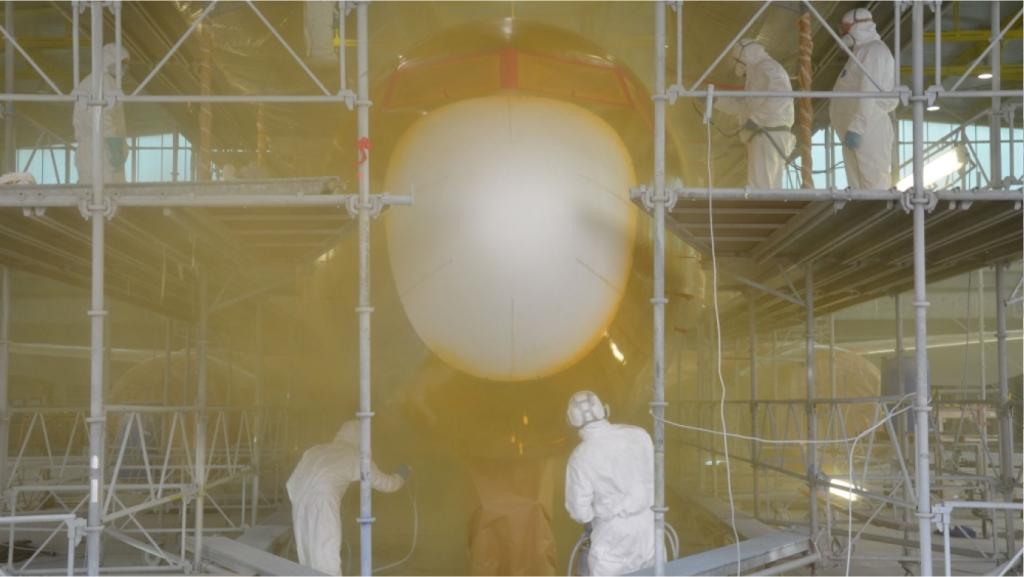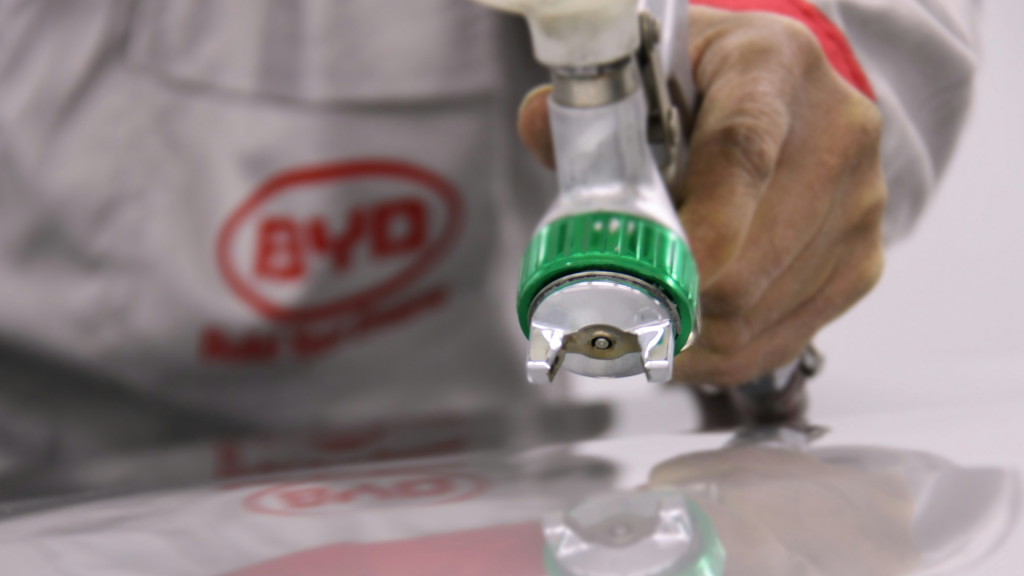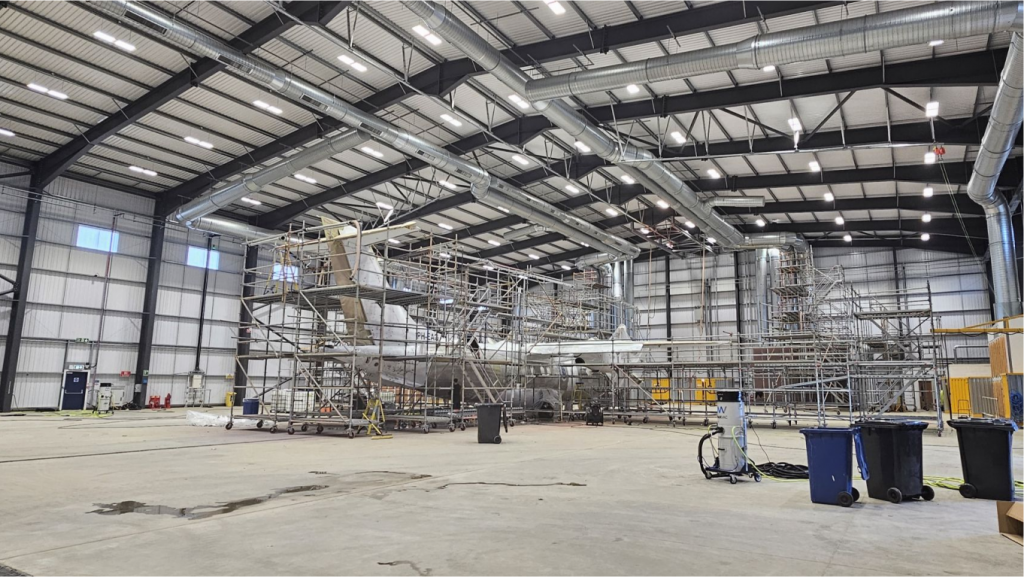Aircraft Paint vs. Auto Paint: What Every Enthusiast Needs to Know Before They Want to Paint a Vehicle
 25.03.2025
25.03.2025
 5 mins to read
5 mins to read
Have you ever wondered why a car’s paint gleams under the sun, while an aircraft’s exterior endures the harshest skies without a blemish? The secrets lie in the contrasting worlds of automotive and aircraft painting.
While both aim to protect and beautify, the stakes, challenges, and techniques differ vastly. Understanding these differences not only highlights the intricacies of each process but also underscores the critical role of specialized paints in ensuring safety, performance, and longevity.
Dive into the fascinating distinctions between automotive and aircraft painting, and discover how each industry masters the art of the perfect finish.
1. Surface Preparation Aircraft vs Vehicle: Different Materials, Different Methods
Automotive: Standard Protection Against Corrosion
Car bodies are primarily made of steel and plastic, which are prone to corrosion and require proper surface preparation. The preparation process includes:
- Cleaning and degreasing
- Removing rust and old paint
- Applying an anti-corrosion primer
- Sanding for better adhesion
In modern car manufacturing, electrophoretic deposition (e-coating) is used to provide uniform corrosion protection. Workshops rely on epoxy or acrylic primers to protect metal surfaces and ensure good adhesion of the base coat.
Aircraft: Advanced Anti-Corrosion Treatments
Planes are made of aluminum alloys and composite materials, which require specialized treatment before painting. The preparation process includes:
- Chemical etching – removes contaminants and previous coatings
- Anodizing – an electrochemical process that enhances corrosion resistance
- Application of specialized primers – formulated to withstand extreme temperatures, UV radiation, and exposure to aviation fluids
Key Difference: When choosing between automotive and aircraft painting, it’s important to note that while automotive painting focuses on standard corrosion protection, aircraft painting involves specialized chemical treatments and anodization to enhance durability under extreme conditions, minimizing potential damage to the paint.

2. Auto Paint vs Aircraft Paint: Efficiency vs. Precision
Automotive: Fast and Efficient Spray Paint Application
The automotive painting process involves multiple layers:
- Primer for adhesion and corrosion protection
- Based paint for color
- Clear coat for protection and shine
Car manufacturers use highly automated spray systems to ensure consistency and efficiency. In repair shops, HVLP (High Volume Low Pressure) spray guns are used to evenly apply the paint while minimizing waste.
- Factory painting time: A few hours
- Workshop painting time: 1-3 days, depending on the work required

Aircraft: Lightweight, Durable Coatings
Aircraft painting follows a similar multi-layer approach but with much thinner coatings to minimize weight. The process includes:
- Application of a specialized primer
- Base coat using highly durable polyurethane paints
- Optional clear coat for added protection
The painting of a large aircraft, such as a Boeing 747, can take up to two weeks due to the need for manual application, drying, and extensive quality control.
Key Difference: Automotive paint jobs prioritize speed and efficiency to save both time and money. In contrast, aircraft painting requires precision and weight reduction to ensure aerodynamic efficiency and fuel savings. This meticulous approach in aviation also needs specialized chemical treatments and anodization to enhance durability under extreme conditions.
3. Durability and Environmental Resistance: Ensuring Long-Lasting Protection and Minimizing Spray Paint
Vehicle: Protection Against Road Conditions
Car paint must be resistant to:
- Rain, snow, and road salt
- Chips from small debris
- UV rays that cause fading
Most automotive paints are designed to be resistant to minor impacts, with clear coats providing additional protection against scratches.
Aircraft: Extreme Conditions at High Altitudes
Aircraft operate in harsh environments where they are exposed to:
- Temperatures as low as -55°C and as high as 70°C
- High levels of UV radiation
- Rapid pressure changes
- Exposure to fuel, de-icing chemicals, and hydraulic fluids
As a result, aircraft paint must be:
- Resistant to temperature fluctuations
- Chemically resistant to aviation fuels and de-icing fluids
- Thinner and lighter to avoid adding unnecessary weight
Key Difference: Automotive paint must withstand daily wear and minor physical impacts, while aircraft paint must endure extreme environmental conditions and chemical exposure over extended periods.

4. Weight Considerations and Fuel Efficiency
Weight is a major concern in aviation. A full repaint of a Boeing 747-400 can add over 250 kg of paint, which increases fuel consumption. Many airlines opt for minimal paint coverage, using only logos and lettering to keep the plane as light as possible.
By contrast, car manufacturers do not face the same constraints, and paint thickness is optimized for durability, and aesthetic appeal sucha as gloss rather than weight.
Key Difference: Airplane painting is designed to minimize weight and improve fuel efficiency, while automotive painting focuses on aesthetic appeal and protection without weight restrictions.
5. Cost Differences
- Car painting:
- Factory application: £400 to £1,500 per vehicle
- Workshop repainting: £800 to £4,000 depending on the job
- Aircraft painting:
- Small aircraft: £8,000 to £39,000
- Large commercial aircraft: £155,000 to £775,000
Airplane painting is significantly more expensive due to the size, specialized coatings, and extensive labor required.Key Difference: Aircraft painting is far more costly than automotive painting due to specialized materials, labor-intensive application, and regulatory requirements.
6. Conclusion: Key Differences at a Glance
| Factor | Automotive Painting | Aircraft Painting |
| Surface Preparation | Standard priming and sanding | Chemical etching, anodizing |
| Application Process | Fast, automated spray systems | Manual, high-precision application |
| Durability | Resistant to minor impacts and weather | Resistant to extreme temperatures and aviation chemicals |
| Weight Impact | Minimal concern | Weight is a major factor for fuel efficiency |
| Painting Time | A few hours to 3 days | 1-2 weeks |
| Cost | £800 to £4,000 | £155,000 to £775,000 |
While both processes share similarities in terms of layering and finishing, aircraft painting requires greater precision, durability, and weight reduction. Automotive painting, on the other hand, is optimized for mass production and cost-effectiveness.
Understanding these differences highlights the technical expertise required in both industries and how painting plays a critical role in vehicle performance, longevity, and brand identity.



